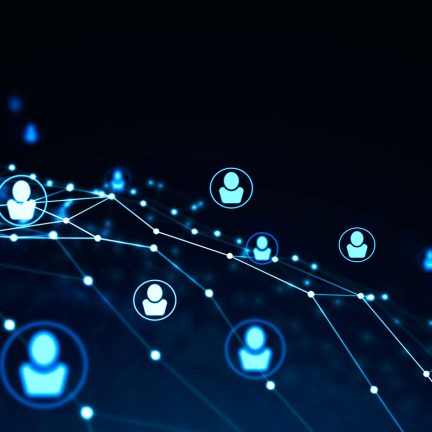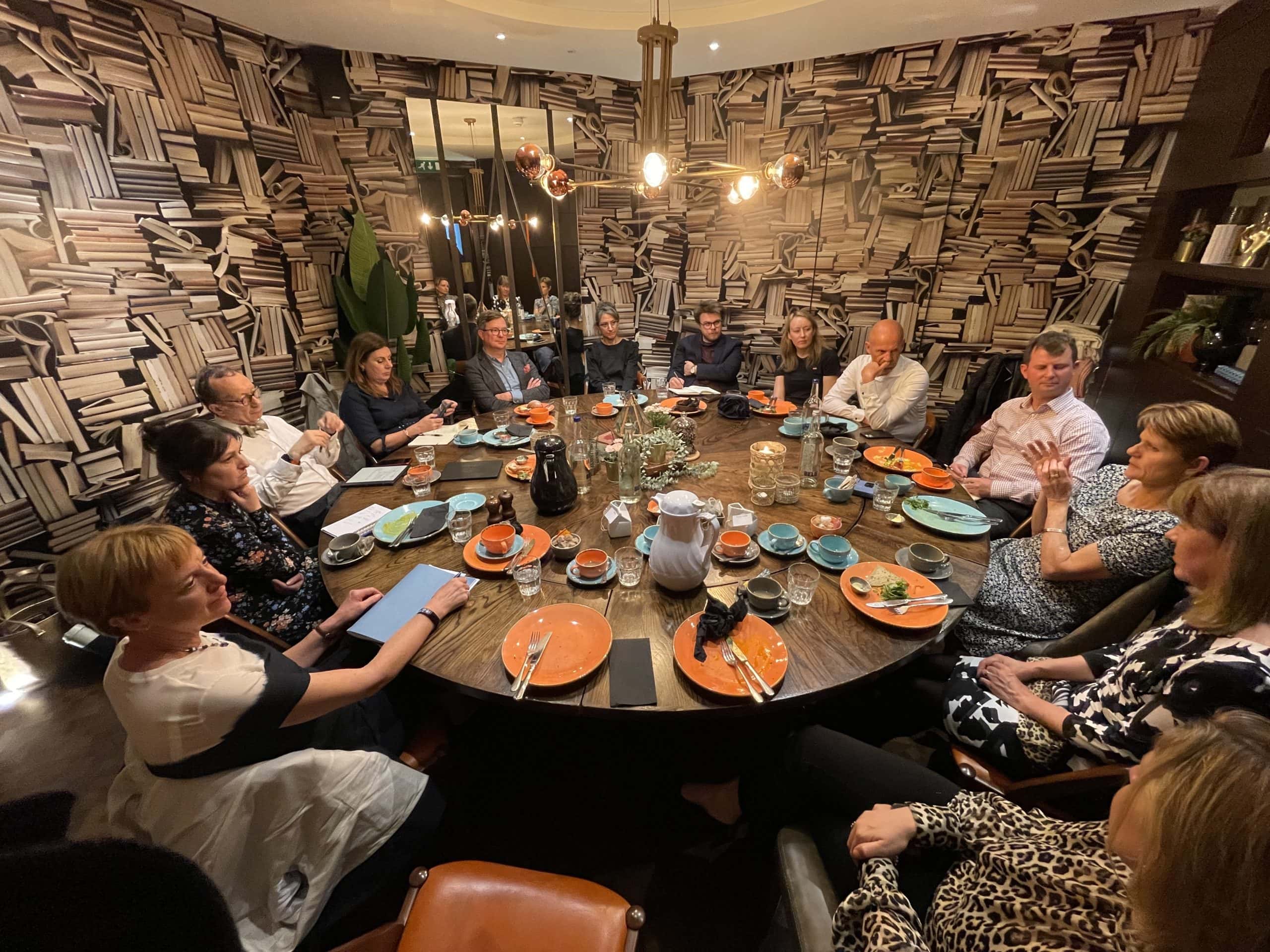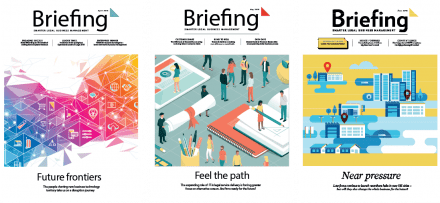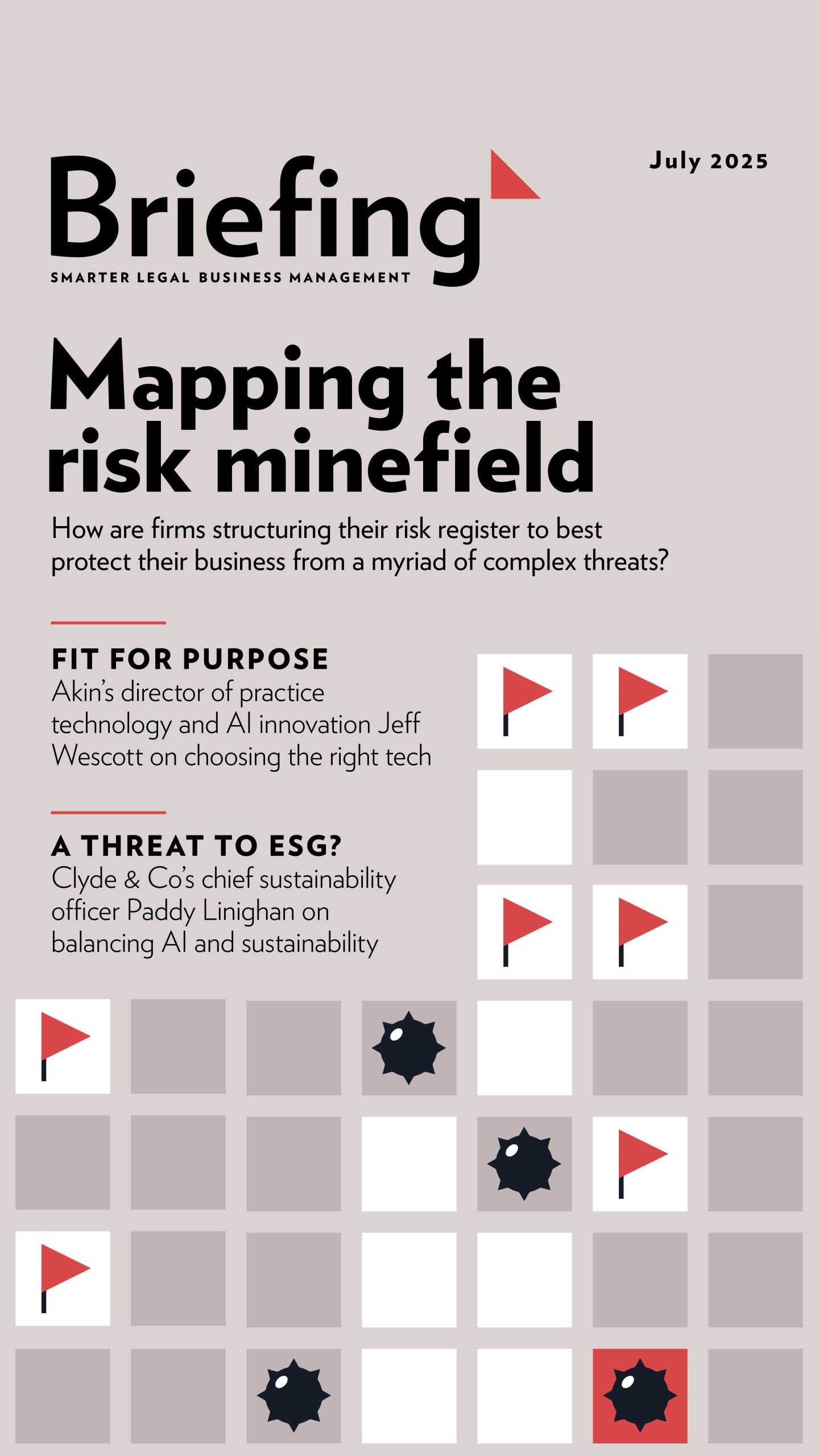Transport the client experience to a digital world
Law firms are dedicated to client service. In fact, the level of service law firms provide has historically been second to none. Having become both expected and highly valued, their approach has involved clients speaking with their legal advisers on the phone or in-person. This level of ‘personal touch’ has reassured clients and left them confident that help is within reach whenever needed.
However, today’s clients are extremely busy – and so are their lawyers. It’s not feasible to expect lawyers to be on call to answer every question 24/7/365, especially when clients often seek information outside standard business hours. Beyond that, the Covid-19 pandemic made in-person lawyer and client visits nearly impossible – even when feasible, it’s frequently not been the preferred method of communication.
The value and opportunity for in-person client service touchpoints has changed. They are still extremely important and a staple of every lawyer-client relationship, but clients now expect self-service and access to key information at the click of a button. They both still want the traditional ‘white glove’, person-to-person version of client service, but also want options that favour expediency, convenience and cost savings.
The value and opportunity for in-person client service touchpoints has changed. They are still extremely important and a staple of every lawyer-client relationship, but clients now expect self-service and access to key information at the click of a button
This paradigm shift has bolstered the popularity of electronic client portals, in which law firms create a digital repository of the client’s matter and financial information available in ‘real time’. Whether it’s the middle of the night or over a weekend, clients can go to the portal to access bills, view and download documents, or understand the status and next steps in a case, without always requiring direct contact with their lawyers or the firm.
Breaking barriers
At first glance, the electronic client portal may seem to put up a barrier between client and lawyer, reducing the amount of human communication to impersonal, cold, digital transactions. However, the opposite is true when clients, and lawyers, realise these portals increase their self-service capabilities, allowing clients more instant gratification with minimal effort – particularly around requests for common occurrences.
To illustrate this point with an everyday example, consider how the tremendous convenience of online banking has made customers more loyal. By making banking services easily accessible from anywhere, at any time, banks keep clients satisfied and make them feel well served. The idea of being forced to go to the bank to make deposits, transfer funds or simply review account activity feels archaic. Legal clients are looking for the same level of accessibility and flexibility when working with their law firms, and portals make that possible. At the same time, portals free up time on both sides for the most important conversations and improve customer service and efficiency.
Certainly, the quality of the lawyer’s legal advice, strong communication and a trusted working relationship with the client are crucial elements, and no technology can replace a lawyer’s counsel. But portals provide an important, complementary role that augments a lawyer’s personal capabilities, functioning as a round-the-clock resource the client knows is there. Regardless of whether the lawyer is on a plane, unavailable owing to differing time zones or servicing another client, the portal is always accessible. Therefore, a well-stocked, user-friendly and high-functioning portal can be an incredibly important asset both to the law firm and the legal client.
Smooth transitions
Not all law firm portals are equally effective, so firms need to put abundant thought into which technology platform they choose and which data and documents they include. Both lawyers and IT staff should collaborate to determine the portal’s contents, and they should also try to determine which kinds of information the client wants to access, as well as how the portal can appear more inviting, helpful and organised.
Perhaps the portal should include access to documents, invoices or correspondence, and have collaboration functions that allow the firm and client to work together more efficiently. Above all else, it’s essential that the portal be not only easy for the client to navigate and use, but also straightforward for the law firm’s team. A non-intuitive portal will not be a resource for anyone – it’ll be a frustration.
Electronic client portals help law firms develop a closer relationship with their clients because one of clients’ biggest value points today is time – but portals help clients save money too, because they free up the lawyers to focus on the substance of a case, allowing them to deliver higher-level legal services.
To find out more, visit aderant.com/drive
Briefing’s knowledge systems brunch found evolution on the menu – and is the intranet dead?
Following a series of online knowledge management (KM) discussions held earlier in 2022, the Briefing team recently sat down in-person with a dozen or so of the legal market’s KM leaders to discuss their tech challenges and potential solutions.
Now, this wasn’t a Q&A with a panel and moderator or anything quite as formal as that – though Richard Brent, Briefing’s head of content, hosted the sit-down brunch at an undisclosed location in the City, it was very much an honest, participant-led affair under Chatham House rules, to encourage as much open sharing as possible.
Sharing is caring
We started off where many discussions around knowledge sharing begin: the difficulty in incentivising lawyers to share their knowledge, rather than move on swiftly to chargeable activities. In part, we heard that this behaviour can arise from the sheer number of systems lawyers are expected to engage with when it comes to squaring off a matter and entering lessons learned into a system – a problem made all the worse by the proliferation of systems during the pandemic. One leader pointed out the difficulty IT professionals often have in speaking ‘legalese’ to lawyers and understanding their requirements, while another cited the low priority – quite understandably so – that lawyers put on memorising the use of such systems.
Another theme all the leaders agreed on though is that the demand for knowledge teams to support their firms and keep sharing more knowledge has increased as a result of the tacit learning gap that’s opened up through remote working.
The result can be a knowledge “free-for-all”, with different teams and practices using systems in subtly different ways, many firms approaching seemingly useful tools like Teams and Yammer differently too, and teams trying to produce additional knowledge content to meet demand. That’s required an increased level of collaboration between departments for at least one firm, which has found a need for a system of confidentiality screens and more structured methods of collaboration.
To discourage the formation of knowledge silos, some of the leaders also kited the idea of implementing matter maps, but agreed that deciding who manages those processes can be problematic and could lead to more silos if not handled correctly.
Indeed, a new approach to knowledge management overall is potentially emerging, involving use of tools such as Teams not necessarily to capture new knowledge – an approach that can run the risk of creating silos and confusion, as already mentioned – but to push knowledge to specific teams, potentially by integrating them into workflow tools and processes.
This could be the core of new, more agile, ‘knowledge communities’, spun up quickly to react to specific needs. That kind of arrangement might be particularly useful in scenarios like the recent surge in sanctions against Russia, we heard, although firms are not all up to speed to the same degree.
Intranets re-imagined
To build out such an arrangement, law firms may also need to rethink the purpose and structure of the intranet as a place to store and surface knowledge. We even heard the question: is the intranet dead? Frequently in need of technical upgrades, often including a move to the cloud, and a tool that requires a huge amount of resource to maintain, the talk turned to how ‘the intranet’ can fit into a world where Teams, Yammer and the rest are being used in conjunction with other KM systems. There are cultural considerations here as well – one leader discussed the difficulty of managing the intranet in conjunction with other departments, such as HR, which often uses the intranet for its own purposes but leaves technical management of the system to KM – creating a split ownership of the system.
What might the intranet of the future look like? Well, ownership might default instead to comms teams, with the KM aspects somewhat hived off and slimmed down for KM to manage on its own.
It might be a less ambitious but more effective vision – and one which might help it to function as a ‘vehicle’ for knowledge storage, which could then be pushed upwards to a more useful ‘hub’, able to distribute knowledge and surface what individuals specifically want, much like a dashboard. Exactly which systems feed into that is up to firms, but the general take in the room was that such hubs could benefit from having a little AI magic applied to them to personalise the knowledge sharing and search process – the ‘Amazon-ification’ of useful business content if you will.
Data struggles
While a new hub model for knowledge may take time to mature, almost every knowledge leader agreed that managing the data underlying it needs work. “Every knowledge department needs a data strategy,” one leader declared – but they admitted very few had yet figured out how that strategy should work. Nor do many KM departments have the skills internally to manage data properly and use reporting tools such as Power BI, it transpires. Those skills often exist in the finance or the BD and marketing teams, who may agree to share the expertise around. But doing that sustainably, or even locating the skillset in a world where new people could be hired to work on data more broadly, are further challenges. See Briefing’s February cover story, Data integration – knot a problem? to see how some other firms are approaching centralised data science.
And until we have knowledge of our next gathering, keep an eye on Briefing for smarter business management lessons that can be applied right across the firm.
Toward integration
Matt Graywood, head of professional services for EMEA, Aderant, explains why law firms need to be aware of the legal technology ecosystem and how to harness it for efficiency and profitability.
Matt Graywood has spent most of his professional life in fintech – with over 20 years’ experience in enterprise software. Six months ago, he brought this experience to Aderant, leading a team helping firms to implement Aderant solutions. For him, joining Aderant was a natural progression, he says. “I see the legal industry right on the heels of the financial industry in terms of technological advances that streamline processes to create massive efficiency gains.”
Throughout Graywood’s career, the idea of technology as a driver of change has been key. He sees that the biggest challenge for law firms is simply being aware that the legal technology ecosystem exists – that things might be centred around one core platform, but with agnostic solution add-ons that make the core platform even better. “A law firm can extend the capabilities of a core platform, whether on premise or via cloud, and use that to drive efficiencies that translate into profitability,” he says.
Ecosystem as solution
But why do law firms need to understand this ecosystem – as opposed to just the individual products and services? After all, from their perspective, isn’t it just like picking items from a shelf in a shop?
“What has traditionally been called a ‘technology stack’ isn’t quite accurate,” says Graywood. “Ecosystem is a better analogy because it’s about all software and systems working together collectively and providing that perfect balance.”
He outlines how the ecosystem, rather than being set in stone, is a phase in a cycle that starts out with standalone ‘point solutions’. “Then you get a period of consolidation around a broad central platform – which offers greater integration at a lower cost. Having then gained the benefits of that core platform, we want to get ‘best of breed’ but keep the core platform, so you get periphery systems,” he says. He likens these systems to pilot fish swimming around a shark. “They are smaller and task-specific, but they add value.” So, instead of thinking of individual products and services as the ‘solution’, this ecosystem is the solution – a core product complemented by periphery applications.
He explains what this means for legal organisations. “The core platform would be the practice management system and the periphery applications would be specialised tools or those that extend the capabilities of the core – such as mobile time capture that integrates seamlessly with the PMS – or, which meet needs the core platform cannot, such as electronic billing compliance,” he says.
Cloud integration
However, the next phase of the cycle (the one we are in now) is particularly exciting for law firms, he says – where the core and its peripherals offer integrated value, particularly in terms of cloud products integrating with the core products.
He gives an example. “In the early 2000s, businesses began to explore cloud solutions. Today, it’s not about ‘do we move to the cloud or don’t we? ’ – it’s both. The whole ecosystem sits across the two and a firm can transition between them without thinking about it. So, if you have a cloud-based solution that is PMS-agnostic, you can have an on-premise PMS with an independent cloud-based timekeeping solution, with all the benefits of integration but sitting across both your own premise and your cloud platforms,” he says.
Portals – which can radically extend the capabilities of a core platform – are also becoming more prevalent. “Aderant Drive is a knowledge management tool that leverages the data from the platform, but it’s cloud-based, so can also harness data from across the enterprise. It brings all of that together to create a lawyer-centric workspace for internal use – but you can then extend it to external use for client collaboration purposes and differentiate yourself from the competition,” says Graywood.
He has seen first-hand, he explains, how laborious onboarding is. “Entire onboarding teams exist to onboard the client before you can start delivering services. If you can extend that process to the client – so they upload the documents and input information – it makes it not only easier for them, but also more efficient and cheaper for the business,” he says.
He says that not only can firms use portal technology to apply this sort of “self-service” aspect to streamline their file opening; they can also adapt it to provide a value-add service to clients. “Client portals can also provide real-time client access for matter and billing information. Clients often have lots of questions around fees, so turning it into a query base is both more efficient and an added-value service.”
A service provider ecosystem
“So, understanding the ecosystem is critical for the service providers as well,” says Graywood. “The legal IT network of organisations that drive the creation and delivery of IT products and services is extremely healthy – both in terms of service delivery and levels of competition and innovation.”
And in Graywood’s view, the wide range of service providers within the current ecosystem provide firms with much more choice about how to execute their strategy. He offers up another colourful analogy. “If you want to buy a BMW, you might go to the dealer for some things, but then visit the guy down the street for a minor repair. In the legal technology world the main dealers are vendors like Aderant, who provide the main product. But there’s an ecosystem around them – an Aderant services team, as well as specialists that work with Aderant, or generalists that can advise them on their strategy. Aderant has a partnership programme, which helps to drive that ecosystem.”
So, what will happen to this service provider network over the next five years? Graywood thinks that, like the legal tech ecosystem overall, it will be even more joined-up – and that’s a good thing. “We don’t see other Aderant service providers as competitors – they fit different needs. If we share best practice, or other information about what’s happening with our products with, for example, a consulting firm or a contractor who has Aderant skills, then it helps us because they will deliver a better service.”











